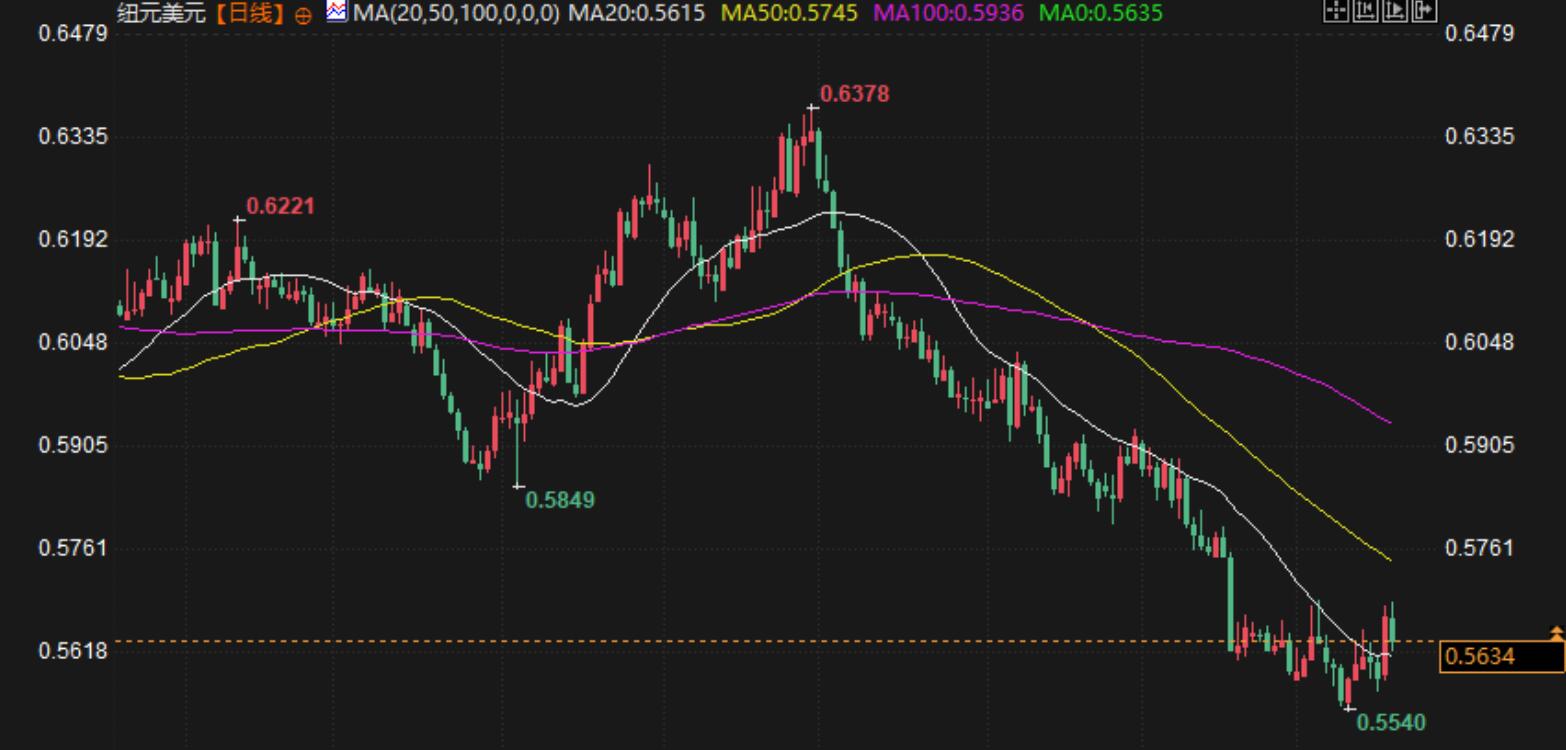Forex Trend Analysis: Can the New Zealand Dollar Stop Falling?
On Tuesday (January 21st), the New Zealand dollar against the US dollar (NZD/USD) continued to decline, with a current price close to 0.5650 and a intraday drop of approximately 0.60%. The weakening of the New Zealand dollar is mainly influenced by a series of factors, including changes in US policies, the escalation of global trade tensions, and weak domestic economic data in New Zealand.

US policy trends affect market sentiment
Recently, US President Trump announced that he will instruct federal agencies to re-examine tariff policies, which has had a direct impact on market sentiment. Trump's tariff remarks have raised concerns among investors, which could exacerbate global inflationary pressures and subsequently affect the direction of the Federal Reserve's monetary policy. The market generally expects that if Trump continues to implement a more aggressive trade policy, it may have a sustained inflationary effect, forcing the Federal Reserve to maintain its pace of interest rate hikes in the future and limiting its room for rate cuts. Specifically, the market generally expects the Federal Reserve to only make one more rate cut in the coming months.
New Zealand's weak economic data puts pressure on the New Zealand dollar
Compared to the volatility in the US market, the economic data in New Zealand has been relatively weak, further exacerbating the downward pressure on the New Zealand dollar. The latest Business NZ report shows that New Zealand's service industry performed poorly in December, with the Service Industry Index (PSI) dropping from 49.5 in November to 47.9, marking the tenth consecutive month of contraction in this indicator. This data indicates that the recovery of the New Zealand economy is facing significant difficulties, especially with the sluggish performance of the domestic service industry, which has impacted market confidence in the New Zealand economy.
As an important component of the New Zealand economy, the long-term downturn of the service industry may indicate a slowdown in future economic growth. Given the high dependence of New Zealand's economic growth, external environmental fluctuations are particularly sensitive to its impact, especially changes in global demand and adjustments in trade policies.
Future Outlook: Market Focus on CPI Data and RBNZ Policies
As the weakness of the New Zealand dollar continues, the market will further focus on New Zealand's upcoming Consumer Price Index (CPI) data, which is expected to show that New Zealand's annual inflation rate has dropped to its lowest level since 2021. If the CPI data meets expectations, it may further increase market expectations for the Reserve Bank of New Zealand (RBNZ) to cut interest rates. At present, the market generally expects the RBNZ to lower its cash rate from 4.25% to 3.75% at next month's monetary policy meeting. If this expectation comes true, it may exert greater downward pressure on the New Zealand dollar.
Overall, in the short term, the New Zealand dollar may continue to be influenced by both global economic sentiment and domestic economic data in New Zealand. Especially against the backdrop of increasing global economic uncertainty and slowing economic growth in New Zealand, the trend of the New Zealand dollar may remain relatively weak. Investors need to pay attention to the upcoming CPI data and RBNZ's monetary policy decisions in the coming days, as any changes could become important factors affecting the trend of the New Zealand dollar.
conclusion
Although the US dollar continues to appreciate under the influence of Trump's tariff rhetoric and domestic policies, New Zealand's economic weakness and upcoming CPI data may further exacerbate downward pressure on the New Zealand dollar. In the future, the trend of the New Zealand dollar will be influenced by multiple factors such as domestic economic weakness, global trade policy changes, and RBNZ monetary policy adjustments. The market needs to closely monitor the upcoming key economic data and policy decisions to determine the short-term direction of the New Zealand dollar.
Tips:This page came from Internet, which is not standing for FXCUE opinions of this website.
Statement:Contact us if the content violates the law or your rights
